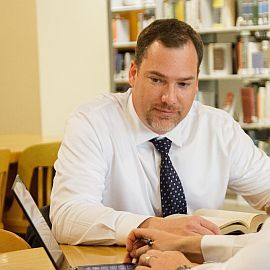Chapter 7 Bankruptcy in Colorado
Chapter 7 Bankruptcy law is covered under Title 11 of the US Code. There are two chapters consumer debtors routinely file under: Chapter 7 and Chapter 13. In some rare cases, a high net worth individual may file under chapter 11. This article discusses what happens after a chapter 7 bankruptcy is filed and does not address chapter 13 bankruptcy.
There are many reasons people file bankruptcy. The process begins by filing a petition and related schedules with the US Bankruptcy Court for the District of Colorado. The person filing bankruptcy is known as a debtor. It is highly advisable that a debtor seek legal counsel before filing bankruptcy. The Colorado Bankruptcy Court advises debtors to use a chapter 7 bankruptcy attorney to represent their case.
Bankruptcy Automatic Stay
Upon the filing of a bankruptcy petition and related schedules, the automatic stay goes into effect. The stay stops all collection activity including repossessions, foreclosures, and wage garnishments. The notice must be properly drafted and served upon the correct parties for any garnishments or foreclosures to stop. After a few days, the court will mail notice to all listed creditors notifying them of the bankruptcy case. In most cases, a bankruptcy attorney drafts the petition and related documents for filing with the court. Debtors are cautioned against using a petition preparer because most pro se cases are dismissed or result in the debtor losing assets they could have protected.
341(a) Creditor’s Meeting
The court sets a creditor’s meeting which is usually held about 30 days from the date of filing. It is rare for creditors to appear. The debtor and debtor’s attorney are required to meet with the trustee to discuss the case. The debtor must bring certain documents to the meeting including most recent bank statements, pay stubs, trustee information sheet, picture ID and social security card. Most meetings last no more than 15 minutes. However, in more complex cases the meeting can take up to an hour. An attorney will advise you what to expect during the meeting and discuss the questions the trustee will likely ask. It is common for the trustee to request additional information or documents after the meeting.
Bankruptcy Trustee Administers the Case
The court appoints a trustee to administer the bankruptcy estate. A chapter 7 trustee is responsible for liquidating non-exempt assets and distributing proceeds to creditors. Many cases are no asset cases. Most debtors have few, if any, assets which are unprotected by Colorado state law. The protection is not automatic. To protect assets, the asset schedules must be properly drafted and must reference the applicable exemption statutes. For debtors who own non-exempt assets, the attorney should explain what to expect prior to filing the case. A debtor represented by an experienced bankruptcy attorney should rarely encounter any significant surprises during their case. Using an attorney allows the debtor to make an informed decision about filing. A chapter 7 bankruptcy allows the debtor to receive a discharge of pre-petition debts in exchange for surrendering any non-exempt property. The debtor must comply with the trustee’s lawful demands in order to receive or maintain a discharge. Utilizing an attorney will ensure that the debtor does not lose property that could be protected.
Certain Debts are Non-Dischargeable
Bankruptcy Code 523 provides several types of debts which cannot be included in a chapter 7 discharge. Certain debts which are non-dischargeable may nevertheless be discharged if the creditor fails to object to the discharge by filing an adversary complaint with the bankruptcy court. These include debts which were incurred under false pretenses or fraud or embezzlement. Other non-dischargeable debts do not require the creditor to object. These include: student loans (including private student loans), most tax claims, claims owed to a government entity, and family support obligations.
Debtor receives a discharge
Approximately 90 days after the case is filed, the court will enter a discharge and mail a copy to all the creditors. It is at this point that the debtor can start rebuilding credit.

Leave a Comment
You must be logged in to post a comment.